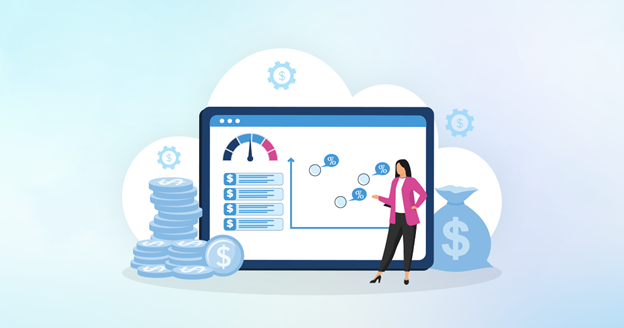Businesses in the rapidly growing field of cloud computing must successfully manage expenses while capitalizing on the advantages of scalability and flexibility. Tools for cloud cost optimization prove to be invaluable in this attempt, including automation, insights, and suggestions to manage and lower cloud expenses. However, it can be not easy to choose the best tool because there are so many options available.
This tutorial seeks to shed light on the most important aspects to take into account when selecting a cloud cost optimization solution. Come along as we walk you through the 8 Features to Look for in Cloud Cost Optimization Tools.
What Are Cloud Cost Optimization Tools?
Tools for cloud cost optimization are software programs made to track, evaluate, and maximize cloud expenses. They make cloud consumption patterns visible, point out areas for cost savings, and help with effective budget management. These technologies help businesses optimize their cloud infrastructure, increase cost-effectiveness, and match spending to business goals by utilizing real-time data and advanced analytics.
Types of Cloud Management Tools

Businesses have a variety of options to choose from when considering cloud cost optimization tools: In-house developed solutions, hyper-scaler native tools, and third-party products.
Homegrown Solutions
Designed internally, these products meet the particular needs of the company but might not have as many sophisticated features or as much scalability as cloud optimization tools available in the market.
Hyper-scaler Native Tools
These tools, which are offered by well-known cloud service providers like AWS, Azure, and Google Cloud Platform, smoothly integrate with their own platforms, albeit their support for multi-cloud scenarios may be restricted.
Third-Party Solutions
Designed by independent suppliers, these tools provide extensive functionality, support for several clouds, and adaptability. In some cases, these cloud optimization services could necessitate extra expenses and integration work.
The 8 Features to Look for in Cloud Cost Optimization Tools

The ability for Cost Monitoring
A strong solution should provide detailed information about cloud usage, enabling companies to monitor expenses down to the resource level and spot inefficient or excessively expensive regions. Customizable reports, sophisticated visualization dashboards, and anomaly detection tools improve cloud cost visibility and help with well-informed decision-making.
The ability to anticipate costs accurately is dependent on complex algorithms that examine past expenditure trends, resource usage patterns, and outside variables like shifts in demand and price. To foresee future expenses and make proactive adjustments to budgets and resource allocations, seek solutions that include scenario modeling, what-if analysis, and predictive analytics.
Spending Recommendation and Optimization
The solution ought to offer practical suggestions for optimizing cloud spending in addition to monitoring and forecasting. This includes determining opportunities for workload consolidation or relocation to less expensive services or regions, rightsizing instances based on usage patterns, and utilizing reserved instances or spot instances for cost reductions. The ability to automate processes helps to further optimize efforts and guarantee ongoing cost-effectiveness.
Ability to Manage a Budget
Budget optimization tools let companies set spending caps, assign funds to various projects or departments, and impose rules to keep costs from going over budget. Financial governance and compliance are strengthened by alerts, notifications, and adjustable thresholds that guarantee prompt action when actual spending diverges from planned levels.
Multi-Cloud Support
The tool’s capacity to accommodate various cloud platforms becomes crucial as enterprises adopt multi-cloud and hybrid cloud architectures. To centralize cloud cost optimization across heterogeneous settings, look for extensive support for the major cloud providers in addition to integration with cloud management platforms or orchestration tools. All cloud installations can benefit from comprehensive cost optimization and governance. This can be attributed to unified dashboards and reporting features.
Range of Workloads and Services Offered
Virtual machines, containers, serverless computing, and managed services are just a few examples of the many services and deployment methods available in modern cloud settings. With comprehensive insights into cost drivers, utilization measures, and performance metrics unique to each service type, the solution should provide extensive coverage across these workloads. Support for cutting-edge technologies like AI/ML workloads and serverless architectures also guarantees future-proofing and relevance in ever-changing cloud environments.
Kubernetes/Container Support
Specialized features are essential for cost-effective management for enterprises adopting containerization and Kubernetes orchestration. Seek solutions that offer insight into workload performance, cluster efficiency, and container resource utilization. Optimizing pod placement and rightsizing container instances are two examples of optimization recommendations specific to containerized settings that optimize cloud cost savings without sacrificing dependability or performance.
Deployment Simplicity
For a quick time to value and smooth acceptance, user-friendly configuration and deployment are essential. To make onboarding and configuration activities easier, the tool should provide user-friendly interfaces, step-by-step setup wizards, and pre-configured templates. Support for serverless architectures and containerized deployments are two examples of cloud-native deployment methodologies. They guarantee scalability and interoperability across various infrastructure environments.
Affordability
Although cloud spending can be minimized with cost optimization tools, it’s important to consider the tool’s total cost of ownership and price structure. Take into account elements like subscription tiers, license fees, and extra costs for support services or premium features. Organizations may evaluate the financial consequences and validate the tool’s investment with the use of ROI calculators, flexible billing arrangements, and transparent pricing. Organizations can also leverage tools like CloudKeeper that offer an end-to-end cost optimization solution without any cost, commitment, effort, or access.
In summary, careful consideration of features, capabilities, and compatibility with the organization’s cloud infrastructure and business objectives is necessary when choosing the best cloud cost optimization solution. Businesses may efficiently manage cloud spending and optimize return on investment in the cloud by selecting a solution that offers multi-cloud support, proactive optimization, and full cost visibility.



















Your blog is invaluable, offering insights that truly make a difference. Please continue creating such impactful content!